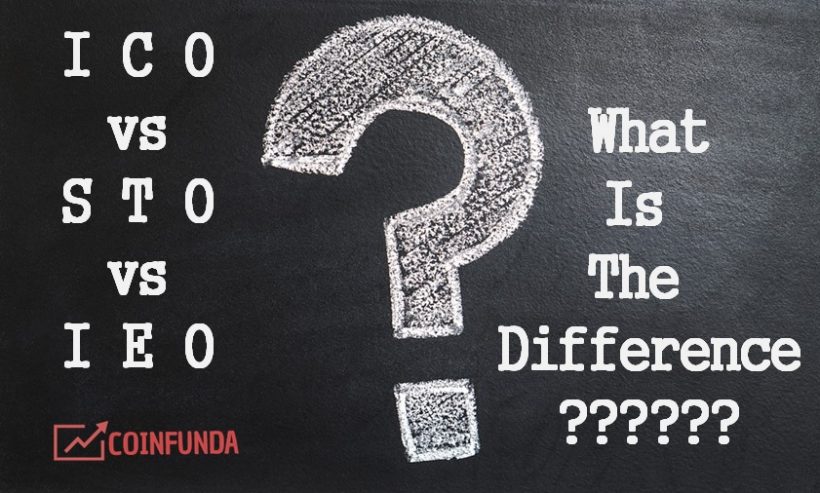The ICO, STO, and IEO (IDO-also known as initial dex offering) are some of the most familiar terms that we use in the crypto world and all of them are related to fundraising in the Blockchain platform. ICO, STO, and IEO are different methods to raise funds through cryptocurrency exchange and they all have their fair share of pros and cons.
A comparative study between the three options will help us to pick out the right method for a particular project.
Difference Between: ICO vs IEO vs STO vs IDO
What is ICO? Explained:
ICO stands for Initial Coin Offering and is one of the most popular crowdfunding methods by far.
ICO is usually used to launch a new service or product in the crypto market like a new cryptocurrency token or an app. It is in fact very similar to IPO (Initial Public Offering) which is used by a new company to raise funds when it ventures into the stock market for the first time.
IDO (Initial DEX Offering)
IDO is a special case of IEO. The main difference between IEO and IDO is that IDO is executed on a decentralized exchange.
How does an ICO work?
An ICO issues crypto coins or digital coins against the investments and is sold in the market at a discount to raise funds.
Just like a stock market, the investors will gain profit if the value of the tokens appreciates from the original price of the token.
Pros of ICO
- The initialization and setting up of an ICO project are relatively easy compared to STO and IEO. Companies with an ICO project needs to issue a Whitepaper, a website of the product concerned and a backup team which will carry out the technicalities of the project. That’s it!
- The cost of an ICO launch is relatively low and thus it is suitable for amateur investors who are new in the market with presumably low funds to invest.
- The process is quite simple and less cumbersome compared to the other two.
- Lesser Government intervention and thus is a preferable option for fundraising for small timers.
- More liquidity within a short period of time.
- The investors have full control over their funds.
- One can raise funds through bounty programs, private and public sales, and through AirDrops.
Cons of ICO
- One of the main drawbacks of this system is that it’s security features. The system is susceptible to scams and fraudsters who pollute the smooth functioning of the system.
- For long-term investments, ICO is not a preferred option.
Recommended Article: Best ICO 2019 – Top Ongoing and Upcoming ICO
What is IEO? Explained:
IEO is comparatively new in the market and stands for Initial Exchange Offerings. Here companies directly sell their tokens in the exchange to individual participants without offering them in an ICO.
How does an IEO work?
In an IEO, the coins are exchanged directly for ETH in the IEO platform.
Here the contributor creates an account in the exchange and sends ETH to the account. When the IEO starts, the ETH is directly exchanged for the tokens.
Pros of IEO
- All exchanges are KYC/AML verified so ensures very high security to the investors.
- Investors directly take part in the exchange, unlike ICO and STO.
- Due to the regulatory levels, the platform is trustworthy and protects the investors of fraudulent activities.
- Participants do not transfer their contributions to a smart contract but directly to their accounts.
Cons of IEO
- Cost of fundraising is very high in IEO and the system itself is difficult to set up.
- Liquidity is very low compared to the other two.
- Investors have very little control in the activities of the exchange.
What is STO? Explained:
STO or Security Token Offering is another fundraising tool but is more complex and difficult compared to an ICO.
How does STO Work?
STO issues an investment contract which is backed by the security token coins and are recorded in the blockchain platform.
Here the security token is asset-backed and represents the ownership information which is recorded digitally in the blockchain community. It is like a digital certificate much like the real-world stocks and bonds that you offer in exchange for the investment
Recommended Article: Best STO (Security Token Offerings) 2019
Pros of STO
- STOs deal with real assets and they comply with government rules which is one of the main reasons that it is one of the most trusted investment tools in the crypto world.
- STOs are more secure because of limited accessibility and only recognize investors who have been properly authenticated can take part in STO operation.
- It is good for long-term and serious investors due to high-security
- Liquidity is very high in IEO.
Cons of STO
- Fundraising cost is really high in STOs compared to the other two and relatively a complex process as well.
- Due to strict security regulations, cross-border investment is tight in STOs.
- Low liquidity level due to tight government regulations. In certain cases, the investments cannot be cashed out for a period over a year.
- STO is regulated by the security laws and all transactions are KYC or AML accredited.













